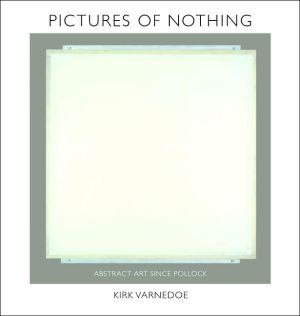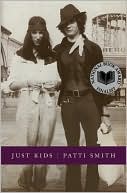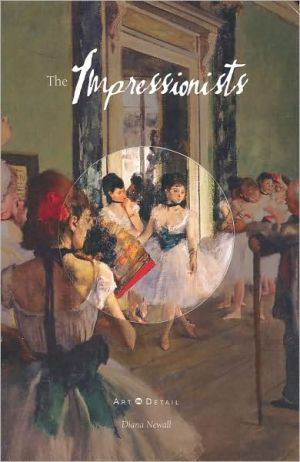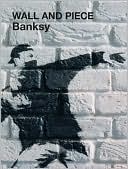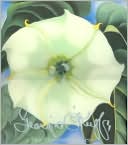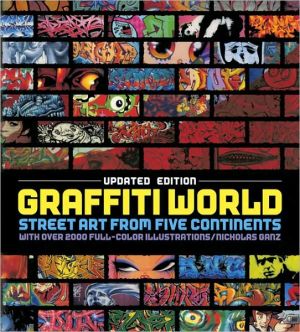Pictures of Nothing: Abstract Art since Pollock
"What is abstract art good for? What's the use—for us as individuals, or for any society—of pictures of nothing, of paintings and sculptures or prints or drawings that do not seem to show anything except themselves?" In this invigorating account of abstract art since Jackson Pollock, eminent art historian Kirk Varnedoe, the former chief curator of painting and sculpture at the Museum of Modern Art, asks these and other questions as he frankly confronts the uncertainties we may have about the...
Search in google:
"Varnedoe was an especially distinguished and influential curator and interpreter of modern art, and this book, in effect, is his last testament. It is in the analysis of specific works of art or bodies of work by a specific artist that Varnedoe shines, reflecting his long career of intimate study of art objects. He is commenting on some of the most challenging of artists, the likes of Richard Serra, Cy Twombly, Jasper Johns, and other innovators in abstraction of various kinds. There are some truly refreshing moments where Varnedoe has the courage of his convictions and explains why one artist of merit should receive more of our attention than another artist of merit-in effect, distinguishing between greater and lesser merit, rather than just good or bad."--Richard Shiff, University of TexasMuseum NewsPictures of Nothing examines how, while names like Pollock, Mondrian and de Kooning are immediately recognized for their significance in modern culture, the importance of depicting squares or splattered paint is not as widely understood. With humor and candor, Varnedoe illuminates the meaning behind nonrepresentational works of the past 50 years—the contradictory intentions of Josef Albers's and Carl Andre's shared geometry or the minute artistic details of Robert Smithson's massive Spiral Jetty.
Foreword by Earl A. Powell III vii Preface by Adam Gopnik ix Note to the Reader by Judy Metro xvii Chapter 1: Why Abstract Art? 1 Chapter 2: Survivals and Fresh Starts 47 Chapter 3: Minimalism 91 Chapter 4: After Minimalism 145 Chapter 5: Satire, Irony, and Abstract Art 191 Chapter 6: Abstract Art Now 239 Acknowledgments 275 Index 277 Photography and Copyright Credits 287
\ Philadelphia InquirerKirk Varnedoe's book . . . confronts the central question of modernism: How are people supposed to understand pictures that appear to be self-referential?\ \ \ \ \ Bookforum\ Elegiac, in the truest sense of the term: It is the pensive summation of a career undertaken by a man in the last stages of a devastating illness, and it is, too, the posthumous reckoning of his words by his closest friends. . . . [T]his book is a remarkable trace of its author. . . . He wanted to insist that any art worth looking at had, at least, many stories to tell.\ — Aruna D'Souza\ \ \ Globe & MailReadable and elucidated by well-chosen examples that help illustrate changing trends in a fast-paced time.\ \ \ \ \ Wall Street JournalWith the publication of Pictures of Nothing: Abstract Art Since Pollock by Kirk Varnedoe, we have a welcome reminder of the high esteem that abstract art came to enjoy in its heyday. . . . Pictures of Nothing, based on a series of lectures that Mr. Varnedoe gave at the National Gallery of Art in Washington, is a book that everyone with a serious interest in modern art will want to read, and it has the additional merit of being well-written and excellently illustrated.\ \ \ \ \ Calgary HeraldYour favorite realist's eyes might suddenly pop open after reading Pictures of Nothing: Abstract Art Since Pollock by Kirk Varnedoe. . . . The art historian . . . is a clear-eyed, eloquently plain-spoken, unfaltering guide through the thickets of drip painting, minimalism, and more. Why abstraction? Look here for an answer.\ \ \ \ \ Toronto StarThe knowledge that this would be Varnedoe's last public appearance brought a plainspoken urgency to the lectures that's carried over to this transcribed and edited text.\ \ \ \ \ RA MagazineVarnedoe's enthusiastic insights fill the pages. Through his descriptions, bare, arbitrary or seemingly interchangeable works start to bristle with distinctiveness. . . . His vision of America's abstract half-century in Pictures of Nothing is . . . eclectic and embracing.\ \ \ \ \ Christian Today[These] lectures are remarkably fresh and conversational—not only because Varnedoe did not have a chance to edit and revise them, but also because he gave these lectures, as he did every other lecture, entirely from memory. . . . Varnedoe's lectures reveal the positive role of abstract art in modern cultural life. . . . Varnedoe insists; abstract art is difficult, it takes practice to understand, and if it is governed by rules that appear arbitrary, that only makes it like every other cultural practice.\ \ \ \ \ Seattle TimesKirk Varneode begins by pointing out that the development of abstract art coincided with the cataclysm of World War I, which jarred artists into revolutionary forms. . . . [An] extraordinary series of lectures.\ \ \ \ \ BookForumElegiac, in the truest sense of the term: It is the pensive summation of a career undertaken by a man in the last stages of a devastating illness, and it is, too, the posthumous reckoning of his words by his closest friends. . . . [T]his book is a remarkable trace of its author. . . . He wanted to insist that any art worth looking at had, at least, many stories to tell.\ \ \ \ \ Los Angeles TimesAn eminently readable, deeply insightful book.\ \ \ \ \ The AustralianVarnedoe is a pragmatist. To those who would say that abstract art is a classic case of the emperor's new clothes, he simply says that it has been around for more than a century and that is proof enough of its efficacy. What he wants is not to validate what artists have been doing all this time but, rather, to find cogent ways of talking about it and, hence, a deeper understanding. . . . What this wonderful book shows is that although the original motivations behind abstract art were puritanical, crypto-religious or collectivist, it has flourished as a series of secular, diverse, individualistic, private visions. Society thrives, Varnedoe bravely suggests, when it gives free play to these visions, even those that initially seem absurd, banal or hermetic.\ \ \ \ \ Journal Sentinel OnlineA provocative defense of modern abstraction. . . . Varnedoe's analysis of abstraction, using specific works, helps make sense of various approaches to non-representational art.\ \ \ \ \ ArtNewsExpressed in vivid, accessible, and often passionate language. Varnedoe . . . speaks as a teacher.\ \ \ \ \ Wall Street JournalWith the publication of Pictures of Nothing: Abstract Art Since Pollock by Kirk Varnedoe, we have a welcome reminder of the high esteem that abstract art came to enjoy in its heyday. . . . Pictures of Nothing, based on a series of lectures that Mr. Varnedoe gave at the National Gallery of Art in Washington, is a book that everyone with a serious interest in modern art will want to read, and it has the additional merit of being well-written and excellently illustrated.\ — Hilton Kramer\ \ \ \ \ ArtNet.comPictures of Nothing [is] the transcribed text of one-time MoMA chief curator Kurt Varnedoe's final lectures. . . . [T]he talks are not just for Varnedoe completists—they tackle the question 'What is abstract art good for?' and constitute the charismatic scholar's final word on the subject.\ \ \ \ \ Calgary HeraldYour favorite realist's eyes might suddenly pop open after reading Pictures of Nothing: Abstract Art Since Pollock by Kirk Varnedoe. . . . The art historian . . . is a clear-eyed, eloquently plain-spoken, unfaltering guide through the thickets of drip painting, minimalism, and more. Why abstraction? Look here for an answer.\ — Nancy Tousley\ \ \ \ \ Toronto StarThe knowledge that this would be Varnedoe's last public appearance brought a plainspoken urgency to the lectures that's carried over to this transcribed and edited text.\ — Peter Goddard\ \ \ \ \ RA MagazineVarnedoe's enthusiastic insights fill the pages. Through his descriptions, bare, arbitrary or seemingly interchangeable works start to bristle with distinctiveness. . . . His vision of America's abstract half-century in Pictures of Nothing is . . . eclectic and embracing.\ — Edmund Fawcett\ \ \ \ \ Christian Today[These] lectures are remarkably fresh and conversational—not only because Varnedoe did not have a chance to edit and revise them, but also because he gave these lectures, as he did every other lecture, entirely from memory. . . . Varnedoe's lectures reveal the positive role of abstract art in modern cultural life. . . . Varnedoe insists; abstract art is difficult, it takes practice to understand, and if it is governed by rules that appear arbitrary, that only makes it like every other cultural practice.\ — Daniel A. Siedell\ \ \ \ \ Globe and Mail\ Readable and elucidated by well-chosen examples that help illustrate changing trends in a fast-paced time.\ \ \ \ \ Seattle TimesKirk Varneode begins by pointing out that the development of abstract art coincided with the cataclysm of World War I, which jarred artists into revolutionary forms. . . . [An] extraordinary series of lectures.\ — Sheila Farr\ \ \ \ \ BookForumElegiac, in the truest sense of the term: It is the pensive summation of a career undertaken by a man in the last stages of a devastating illness, and it is, too, the posthumous reckoning of his words by his closest friends. . . . [T]his book is a remarkable trace of its author. . . . He wanted to insist that any art worth looking at had, at least, many stories to tell.\ — Aruna D'Souza\ \ \ \ \ Museum NewsPictures of Nothing examines how, while names like Pollock, Mondrian and de Kooning are immediately recognized for their significance in modern culture, the importance of depicting squares or splattered paint is not as widely understood. With humor and candor, Varnedoe illuminates the meaning behind nonrepresentational works of the past 50 years—the contradictory intentions of Josef Albers's and Carl Andre's shared geometry or the minute artistic details of Robert Smithson's massive Spiral Jetty.\ \ \ \ \ Los Angeles TimesAn eminently readable, deeply insightful book.\ — Christopher Knight\ \ \ \ \ Journal Sentinel OnlineA provocative defense of modern abstraction. . . . Varnedoe's analysis of abstraction, using specific works, helps make sense of various approaches to non-representational art.\ — Edward J. Sozanski\ \ \ \ \ ArtNewsExpressed in vivid, accessible, and often passionate language. Varnedoe . . . speaks as a teacher.\ — Arthur C. Danto\ \ \ \ \ ChoiceThis is an important time capsule of cultural history, grappling with 60-plus-years' history of abstract art's legacies. . . . [T]his book captures the cadence, energy, and verve characteristic of Varnedoe's immensely effective lectures. . . . Erudite in all the best ways, this book is also deeply human, born of love for the experience of art. . . . Highly recommended.\ \ \ \ \ The AustralianVarnedoe is a pragmatist. To those who would say that abstract art is a classic case of the emperor's new clothes, he simply says that it has been around for more than a century and that is proof enough of its efficacy. What he wants is not to validate what artists have been doing all this time but, rather, to find cogent ways of talking about it and, hence, a deeper understanding. . . . What this wonderful book shows is that although the original motivations behind abstract art were puritanical, crypto-religious or collectivist, it has flourished as a series of secular, diverse, individualistic, private visions. Society thrives, Varnedoe bravely suggests, when it gives free play to these visions, even those that initially seem absurd, banal or hermetic.\ — Sebastian Smee\ \ \ \ \ Wall Street JournalWith the publication of Pictures of Nothing: Abstract Art Since Pollock by Kirk Varnedoe, we have a welcome reminder of the high esteem that abstract art came to enjoy in its heyday. . . . Pictures of Nothing, based on a series of lectures that Mr. Varnedoe gave at the National Gallery of Art in Washington, is a book that everyone with a serious interest in modern art will want to read, and it has the additional merit of being well-written and excellently illustrated.\ — Hilton Kramer\ \ \ \ \ Calgary HeraldYour favorite realist's eyes might suddenly pop open after reading Pictures of Nothing: Abstract Art Since Pollock by Kirk Varnedoe. . . . The art historian . . . is a clear-eyed, eloquently plain-spoken, unfaltering guide through the thickets of drip painting, minimalism, and more. Why abstraction? Look here for an answer.\ — Nancy Tousley\ \ \ \ \ Globe and MailReadable and elucidated by well-chosen examples that help illustrate changing trends in a fast-paced time.\ \ \ \ \ BookForumElegiac, in the truest sense of the term: It is the pensive summation of a career undertaken by a man in the last stages of a devastating illness, and it is, too, the posthumous reckoning of his words by his closest friends. . . . [T]his book is a remarkable trace of its author. . . . He wanted to insist that any art worth looking at had, at least, many stories to tell.\ — Aruna D'Souza\ \ \ \ \ RA MagazineVarnedoe's enthusiastic insights fill the pages. Through his descriptions, bare, arbitrary or seemingly interchangeable works start to bristle with distinctiveness. . . . His vision of America's abstract half-century in Pictures of Nothing is . . . eclectic and embracing.\ — Edmund Fawcett\ \
